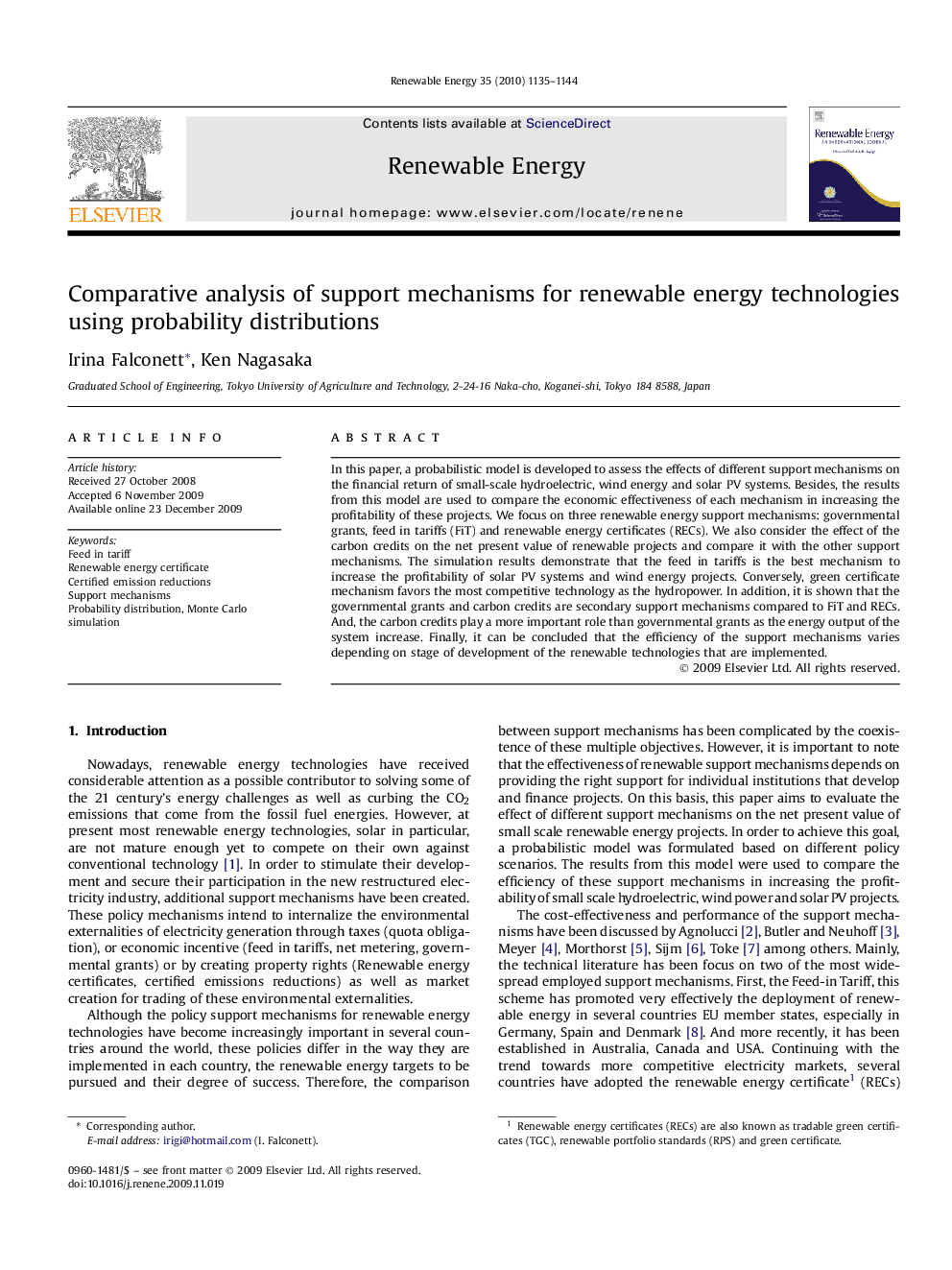| Article ID | Journal | Published Year | Pages | File Type |
|---|---|---|---|---|
| 301512 | Renewable Energy | 2010 | 10 Pages |
In this paper, a probabilistic model is developed to assess the effects of different support mechanisms on the financial return of small-scale hydroelectric, wind energy and solar PV systems. Besides, the results from this model are used to compare the economic effectiveness of each mechanism in increasing the profitability of these projects. We focus on three renewable energy support mechanisms: governmental grants, feed in tariffs (FiT) and renewable energy certificates (RECs). We also consider the effect of the carbon credits on the net present value of renewable projects and compare it with the other support mechanisms. The simulation results demonstrate that the feed in tariffs is the best mechanism to increase the profitability of solar PV systems and wind energy projects. Conversely, green certificate mechanism favors the most competitive technology as the hydropower. In addition, it is shown that the governmental grants and carbon credits are secondary support mechanisms compared to FiT and RECs. And, the carbon credits play a more important role than governmental grants as the energy output of the system increase. Finally, it can be concluded that the efficiency of the support mechanisms varies depending on stage of development of the renewable technologies that are implemented.
